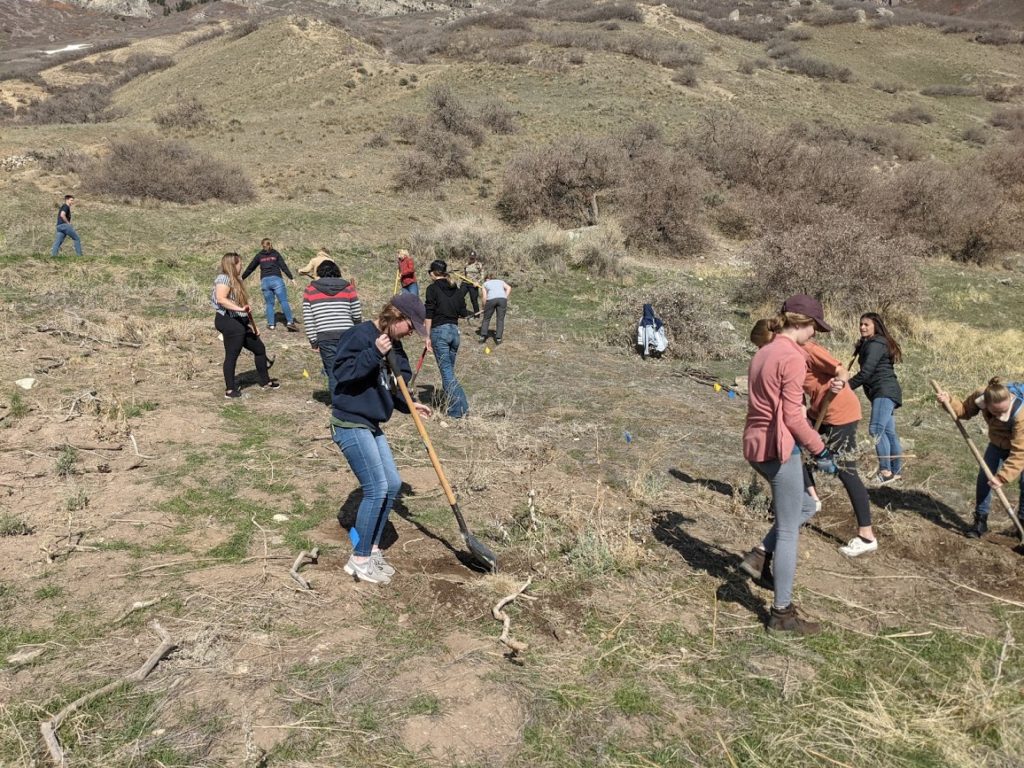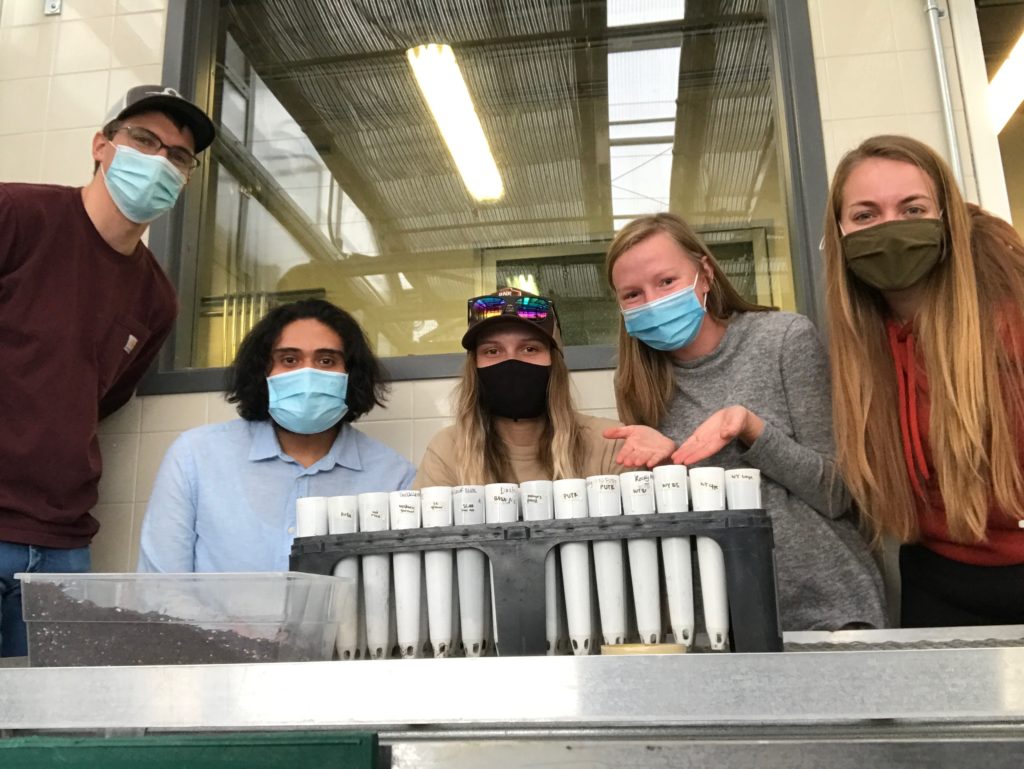
Students and volunteers have collaborated to embark on a restoration and preservation project on the Y Mountain trailhead.
BYU restoration ecology professor Matthew Madsen oversees a wildlife and wildlands conservation class. A group of his students is leading the way to restore natural plant life at the trailhead on Y Mountain.
Senior Alyssa Brown said Madsen led the students in choosing and preparing plots of land at the Y Mountain trailhead to restore some of its natural plant life that has been destroyed or degraded by fires and toxic weeds.
Brown explained that the team focuses on restoration ecology; the Y trailhead and the Provo foothills have been historically overgrazed by humans since Utah’s pioneer ancestors, invasion of noxious weeds and chronic wildfires. The native ecosystems have not stayed established in the area and compete with the newer toxic weeds. She said the group prepared carefully chosen plots of land to install some of the natural plant life.

Senior Emily Thueson is another one of Madsen’s students and said they had the task of planting three main plant species: shrubs, grasses and forbs. The main shrub is sagebrush (specifically Wyoming big sagebrush) and the main grass is bluebunch wheatgrass.
Thueson explained the class “broke dormancy” in the prepared seeds so the seeds were ready to germinate the best they could once planted. One method of breaking dormancy is called chemical scarification. Seeds are put in seed strainers, then soaked in concentrated sulfuric acid to make the seed coat permeable to water.
Students used the Life Sciences Building’s greenhouse to make “cone-tainers” (cone-shaped containers) in which they planted some seedlings in preparation to install at the restoration site, Thueson said.
Another team member, BYU law student Eric Lemus, said the BYU Grounds Office and its director, Glenl Wear, have been extremely supportive of the class’s efforts. That support was crucial to the approval of a restoration undertaking like this, as BYU owns the Y trailhead and trail itself.

Lemus said the team is excited to see what support and interest the public shows in the project because of the Y trail being a beloved Provo attraction. He said the team wants to increase the general public’s participation in restoring the trailhead plant life.
The students have installed a 270-gallon water tank near the restoration site. This water tank will have watering cans nearby so anyone who visits the trailhead can water these newly planted seeds and plants. A sheet will be posted on the water tank for people to write which plot they watered, Lemus said.
BYU Student Sustainability Initiative
Lemus said the student team has partnered up with the Associate Director of Sustainability and Continuity at BYU, Bremen Leak. Leak is heavily involved with the BYU Student Sustainability Initiative, “a student-led organization that aims to increase sustainable practices at BYU on an institutional level and create a campus culture more focused on environmental sustainability.”
The initiative is a self-governed and self-funded group that works to conduct research, raise awareness and facilitate different eco-friendly projects. Leak said BYU students, faculty and staff care deeply about sustainability.
An example Leak used to highlight the university’s eco-friendliness was BYU Dining Services. “Eighty percent of its food waste is collected and composted for campus landscaping, which is exceptional. That’s literally tons of food waste every day that won’t end up in landfills,” he said.
It’s impressive for a university as large as BYU to source more than a fourth of its food from local businesses, Leak said. Using these local businesses cuts down on shipping, storage and production costs; it also lowers emissions because of fewer trucks being used for delivery.
After 60 years, BYU just switched from a high-carbon, coal-fired power plant to a low-carbon, natural gas-powered cogeneration plant that produces heat and electricity at the same time — this will reduce carbon emissions for both BYU and Provo, Leak said.
He looks forward to what he considers the next step: zero-carbon energy sources like solar and wind power. Leak said that will require costing these power sources out, talking with experts and figuring out what makes sense for the campus.
The BYU Sustainability Office has prepared a calendar with 30 simple steps students can take to live more sustainably. “These won’t change the world overnight, but over a lifetime, they’ll make a huge difference,” Leak said.
Leak suggested if students would like to start their sustainable lifestyle in small ways, they can study the issues, get involved, vote, eat less meat and buy local.
“Build healthy habits: reduce, reuse, recycle — in that order. There’s so much we can do, and sometimes a dialogue like this is all we need to get started,” Leak said.
He urged anyone to share ideas with BYU’s sustainability program on “long-term sustainability strategies that consider the environmental and social challenges of our day and provide solutions on an institutional level.” These ideas can be directly emailed to .




